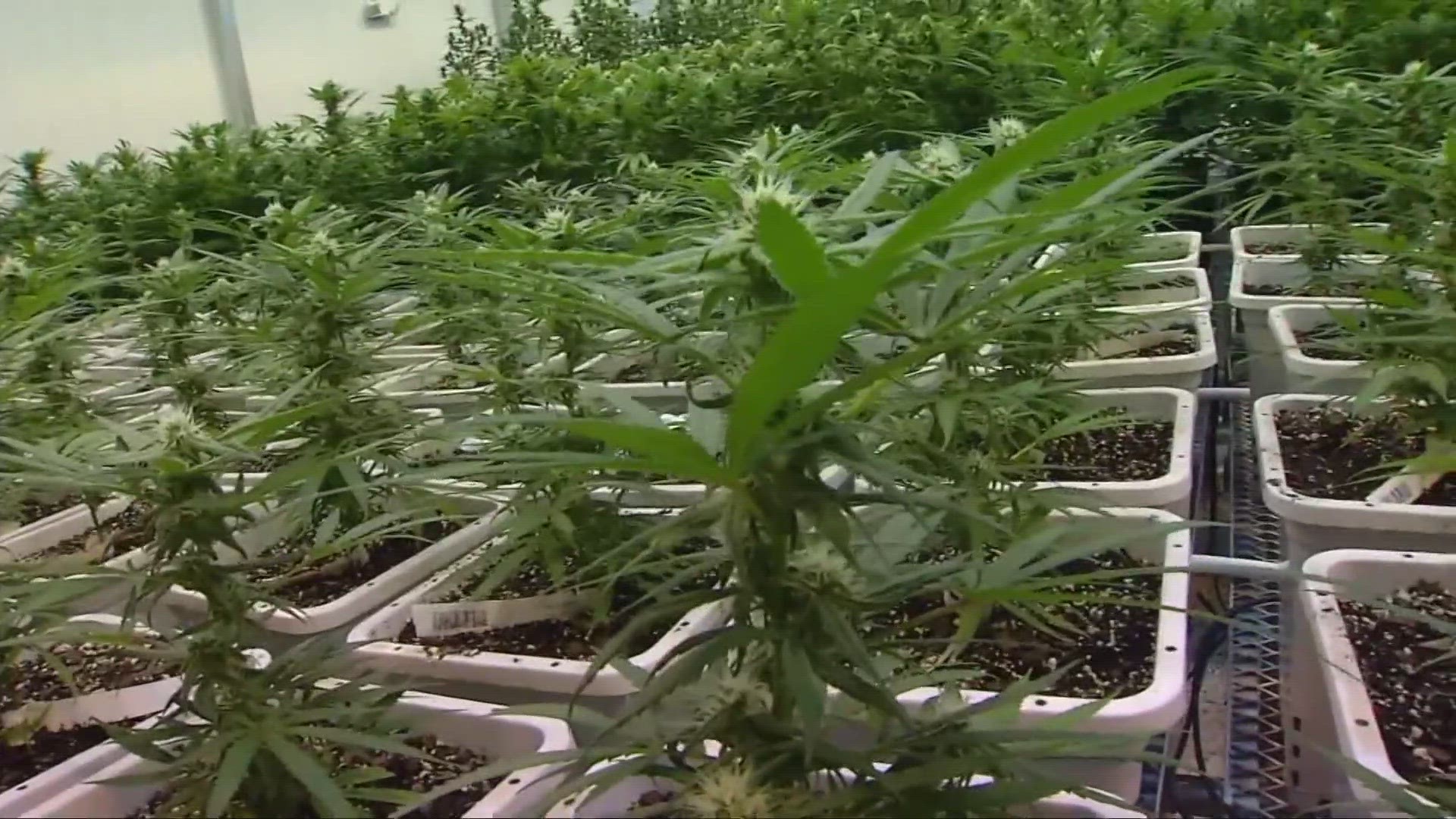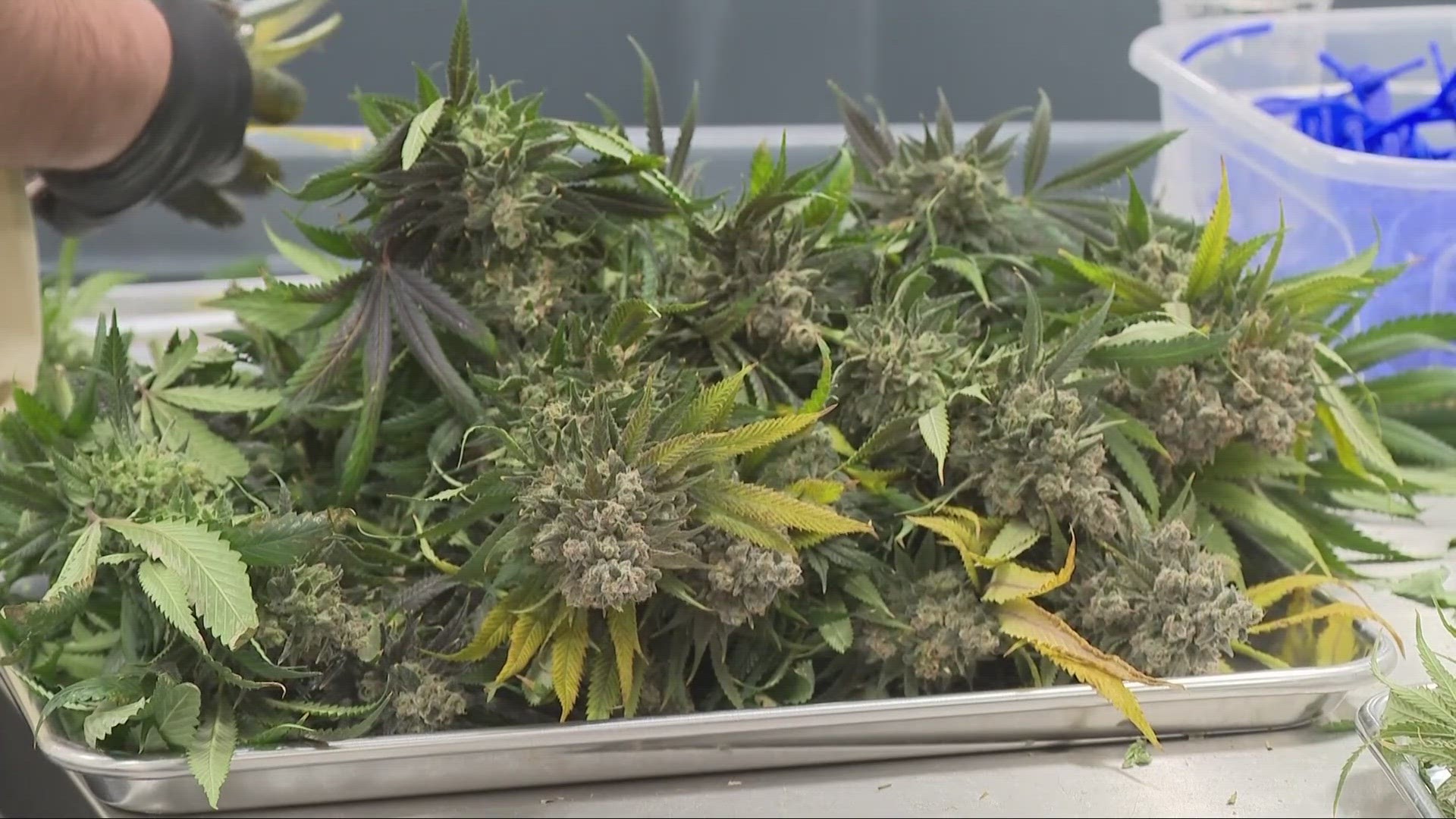CLEVELAND — As Ohioans get ready to vote to decide whether to legalize recreational marijuana use in November, the Department of Health and Human Resources formally asked the Drug Enforcement Agency to ease marijuana restrictions and change its status from a Schedule 1 narcotic to a Schedule III.
What would that mean for Ohio cannabis businesses?
“It would remove the applicability of Section 280E of the Internal Revenue Code, which prohibits people who are selling or producing Schedule I or Schedule II substances from taking their ordinary business deductions on their tax returns,” says Tom Heran, spokesperson for Coalition to Regulate Marijuana in Ohio.
The DEA says it will investigate the issue, but gave no timeline how long that may take.
Meanwhile, Congress is working to ease banking issues for cannabis merchants. Heran says in Ohio, cannabis companies do have access to smaller banks or credit unions, but they pay higher fees and interest rates. A vote may come by September.
“It would open up the industry and ideally provide greater access to larger financial institutions to take deposits from cannabis operators to lend into the cannabis industry. And it may also open up greater access to public markets for cannabis companies operating in the U.S.,” Heran said.
Finally, a new study revealed marijuana users had higher levels of lead and cadmium in their systems compared to those who didn’t smoke pot or cigarettes. The research looked at data from 2005 to 2018 and didn’t distinguish if the marijuana was regulated, which Heran says makes a big difference.
“Ohio products don't make it to dispensaries to be sold unless the operator can verify through third party testing that they are safe, that they don't exceed or don't have heavy metals or other harmful substances,” Heran added.
University Hospitals ER, toxicology and addiction specialist, Dr. Ryan Marino, who’s speaking at an international drug conference in Scotland, responded by email about the issue.
"I agree with the authors’ conclusions that this finding is concerning and deserves more study, however, I would advise caution in interpreting these results as there is no way to prove that the metals in these subjects came from cannabis plants/cannabis consumption (could come from other exposure routes as well) and no testing was done of cannabis plants. In other words, this association should not be used to assume a causal relationship. Lead and cadmium are concerning from a public health perspective as even rather low level exposures can cause delayed, long-term health consequences without necessarily knowing one is exposed or being exposed. Another good example of this is tobacco, which can have heavy metals and is known to have other toxins that lead to long term health effects, like radon. When it comes to lead and cadmium specifically, inhalation is the most concerning route of exposure compared to things like ingestion.
"These findings and the concerns they raise should be good arguments for legalizing and regulating cannabis as the only way to reliably teat for and prevent toxic exposures like these. It makes sense that plants grown in either proper soil and/or clean water would be much less likely to contain contaminants.
"Regarding legalization, it’s a tough and incredibly complex discussion. To put it more simply, prohibition does not work and does not protect people from things like poisoning. The specifics of how to legalize successfully (medical vs recreational, corporate interests, the additional need for regulatory and public health infrastructure etc) require a separate and massive conversation, but legalization is the only way to work towards reducing risks from heavy metals, contaminated or impure drugs, and other risks and concerns that exist under black market conditions.
"Studying plants for heavy metals would not be very difficult to do. This is something that is done for food products and other plants intended for human consumption (and the water supply), and is even something that individuals can do for home gardening. One thing I think people forget in a lot of discussions about legalization, is that it would require buy in for additional support systems to do such testing like for lead and cadmium, among other things."


